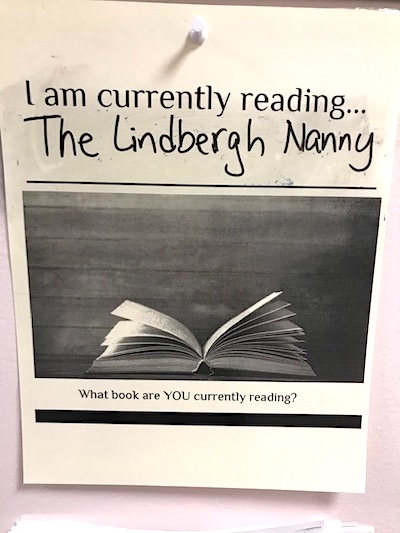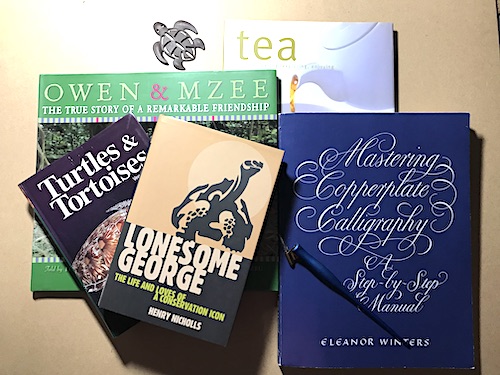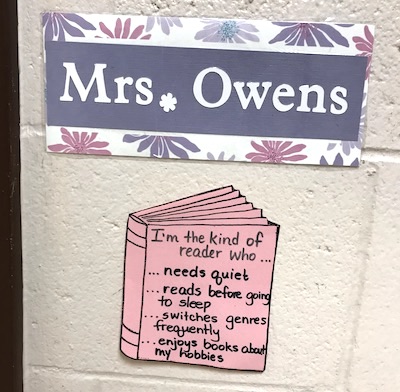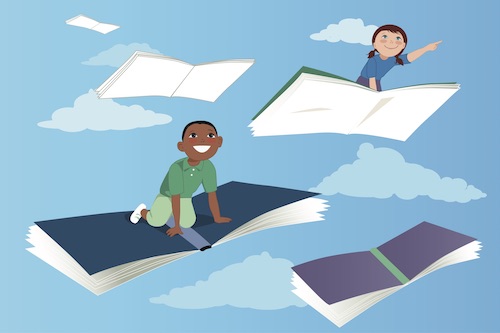Rebrand Reading for Your Reluctant Readers
By Kelly Owens

When readers go on summer break, they lose some of their biggest cheerleaders – us! Now’s the time to rebrand reading to get kids hooked on books.
People love experiences. So think like a travel agent. A finished book may be the destination, but we need to arrange accommodations to assure a joyful journey. Craft a reading itinerary students will beg to visit!
Try a New Tack
You’ve likely heard a student say, “I’ve never liked reading.” Or a parent who sighs, “My child never reads.” Is it that they’re unable to read? Or is it that they’re unwilling?
Being called a “reluctant reader” doesn’t help much either. Author, reading champion and former middle school teacher John Spencer suggests we flip that term to “reading reluctantly” (DeMarco, 2022). It shifts the label from the individual to the behavior. Spencer also challenges us to investigate why the child dislikes reading. Then work on fixing it.
Mindset Is Malleable
Carol Dweck and her colleagues say mindsets are malleable (Goldberg, 2015). We should give children feedback that fosters a positive growth mindset about reading. If students see themselves through a growth-based lens, they may shed their resistance to reading.
Sounds great! But how do we do it?
Five Types of Feedback Fuel Reading Mindsets
Focus feedback on the student’s effort. In a 2015 International Literacy Association blog, author Gravity Goldberg suggests we act like mirrors. Reflect back what the child is doing, without judgment. It’s about them, not us.
1. Be specific by naming steps the reader used.
2. Focus on what the reader is doing, not what’s missing.
3. Highlight the process the reader followed.
4. Craft your comments so skills transfer to other texts.
5. Take yourself out of the feedback. Change “I like how…” to “When you…”
Let’s looks at some strategies to achieve these outcomes.
Build a Reading Identity
When a reader looks in a mirror, what do they see? Years ago I was puzzled when an intervention student repeatedly lugged around a brick of a book. A thousand-page NY Times adult fiction thriller didn’t jive with his reading skills. Then it hit me. He wanted others to think he was a sophisticated reader. He actually cared about his reading identity!
Help students see themselves as readers by modeling who you are as a reader. Some educators post signs outside their doors, listing their current books.
Consider introducing yourself via the kinds of books you like to read.
Or prominently post your reading preferences, as shown below. Encourage students to do the same!
Sharing our reading identities through displays and discussions builds community. As a result, the culture of literacy promotes accountability and feelings of inclusion. Just like students love seeing themselves represented in stories, imagine the delight of discovering reading preferences parallel those of a peer.
Sneaky Strategies I’ve Used to Immerse Kids in Reading
Are students asking to see a popular book-based flick? Read the book first. Then compare similarities and differences in class. It’s a stealth way to promote deeper thinking!
Road trip, anyone? Near or far, use the setting of a book as a jumping-off point. For example, if a novel’s characters go camping and canoeing, check out a nearby state park. Firsthand experiences help readers visualize story scenes.
Connect to a hobby or interest. One example: steer kids who craft friendship bracelets toward books that further inspire their passion.
Buddy read. Sharing the joy of reading makes it exponentially better. Read with a family member, read to a younger child, read with a friend. Discussions are part of the fun!
Explore texts in different forms. Encourage them to devour an ebook on the go. Make mind movies while savoring audio stories. Take a departure from your usual go-to.
Make reading the center of a universe where experiences extend the meaning of the text. Students will get so caught up, they’ll forget books were at the heart of it all!
Find a Boring Place to Read
Our kids aren’t stranded on a deserted island with nothing to do but read. Tons of distractions compete for their attention. Social media alerts suck them in. Sudden cravings for homemade cookies strike. Or maybe the book’s topic – say gaming – inspires a search for local game shops … but ends down a rabbit hole.
Encourage readers to go where the action isn’t. Find a quiet spot that makes them happy and comfortable. Kids love secluded nooks. Encourage them to build a blanket fort for reading. Pile pillows and lie on the floor. Or read outside under a tree. Noise-canceling headphones (sans audio input) also remove readers from surrounding activity.
Other upgrades to the reading experience can be soothing drinks, like tea. Even a stuffed animal or pet can lull one into a peaceful reading state. It’s easier to get lost in the world of books if you aren’t contending with real-life distractions.
Schedule Time for a Reading Routine
So much of a student’s day is penciled on a schedule. If soccer practice and chess club deserve to be blocked out, so should reading time.
Reading repeatedly can be habit forming. And practice makes permanent. Think in small chunks. When can you dedicate a consistent twenty-minute block to reading? Routines are more likely to stick if they happen at the same time each day.
Also, set a timer. A defined beginning and end sets boundaries. It gives the reader a time-out zone dedicated to reading.
Once you don’t have to think about organizing the time and place to read, you can focus on the fun stuff – what books to read! You’re more likely to stick with a reading practice if it’s a time you enjoy, right?
Experiences are memorable. Treat a reading routine as a getaway from the daily grind. Kids will grow to view reading as a passport to exciting new adventures.
References
Chen, G. (2015, April 23). 10 Reading Tips for the Easily Distracted. B&N Reads.
DeMarco, N. (2022, October 21). Renaming “Reluctant Readers.” Book Riot.
Goldberg, G. (2015, December 8). Be a Mirror: Give Readers Feedback That Fosters a Growth Mindset. International Literacy Association.
Mascott, A. (2014, June 2). 3 Super-Sneaky Ways to Get Kids Hooked on a Book Series. Scholastic.
Scholastic Editors. (2019, August 22). 3 Teacher-Approved Tips to Help Students Build Positive Reading Identities in the Classroom. Scholastic.
Kelly Owens is a literacy interventionist who helps middle graders overcome past literacy struggles by building stamina, confidence, and a greater love of learning. As a teacher with over twenty-eight years of experience, she has proudly represented Hillsborough Township Public Schools as a NJ Governor’s Teacher of the Year.
Kelly also co-created Buddies for the Birds, which was featured on Emmy Award-winning Classroom Close-up NJ. Kelly earned her Ed.M. from Rutgers University. Additional writing credits include published work with The King School Series (Townsend Press), The Mailbox magazine, and MiddleWeb.



































